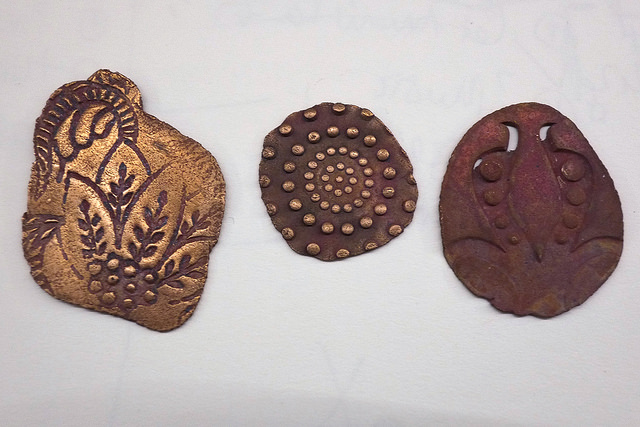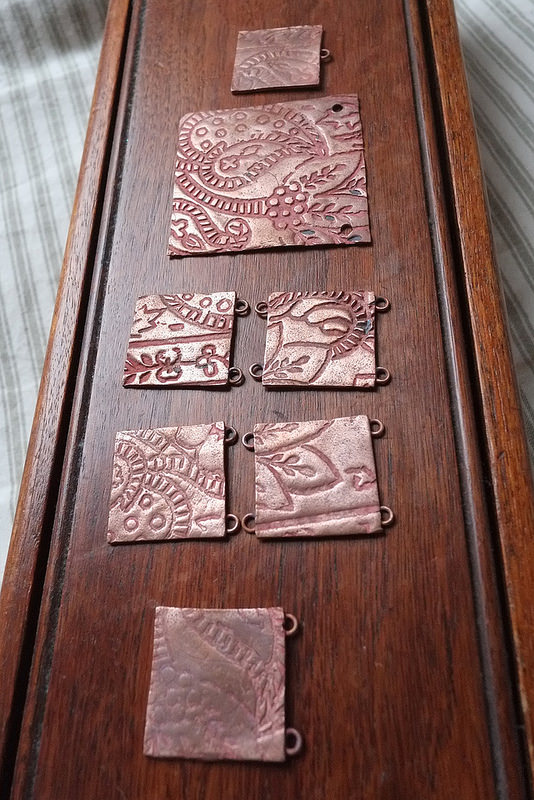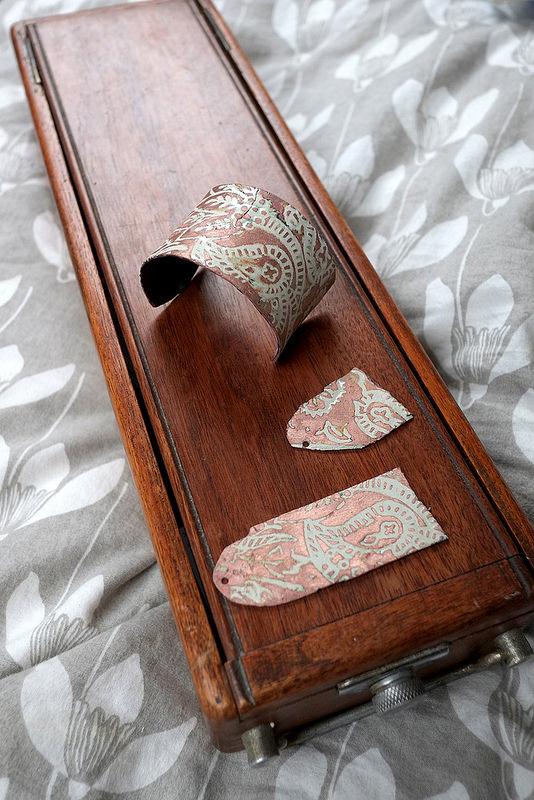champleve is a technique where vitreous enamels are applied to hollows in a metal surface. i’ve previously used resists and etching chemicals to create these high- and low-lying areas on copper plates, but the time involved is prohibitive for any commercial project.

mixing cutting edge and outmoded is a theme of my work – producing digital text resists for use in an ancient technique tickles my fancy 🙂 i’ve even investigated the possibilities for digital engraving using cnc milling. so i couldn’t resist the lure of a brand new material that seems to open endless possibilities. step forward, copper clay…
precious metal clays have been around for a while, but the introduction of new base metal clays – bronze and copper – puts them within price-range of the ordinary mortal. since i use copper as a base for all my enamelling it was a no-brainer to give it a try.

for a new material, the process is about as ancient as it gets: the raw material is a fine-grained soft and malleable clay that can be worked in any ceramics technique. as a printer i figured i’d go for the most basic, but effective, use of stamps directly into the clay. my primary interest was the potential for the use of text – a use for my collection of letterpress type that doesn’t get out as much as it should.
i haven’t touched clay since i was about 7 but i do make pastry! i found it very easy to work, and satisfying to scrunch up the mistakes and start again. the speed of use is brilliant. the top of the fired-up kiln is an ideal drying spot, within half an hour the pieces were plaster-dry and really to be tidied up with filing and sanding. i was sceptical that my kiln would reach or hold the right heat, but every piece has come out perfectly after 30 minutes firing.

you could stop there – the fired pieces are charming – but for me this is a means to an end, so i go on to apply enamels into the dips. enamel powders are suspended in water and painted into the hollows with a fine brush. it takes several layers to fill to the right depth, and the piece is also enamelled on the reverse for strength and stability. each piece will be fired between 5 and ten times in total.

after the hollows are filled to the right level comes the process of stoning back – literally using abrasive stones to remove overflows of enamel and create a flat, glossy surface. these pieces still have some surface texture as i’m going on to add clear enamel over the top to achieve the deep red copper ground i’m after.

impression is from a vintage indian carved wooden fabric-printing block.